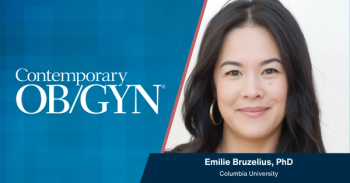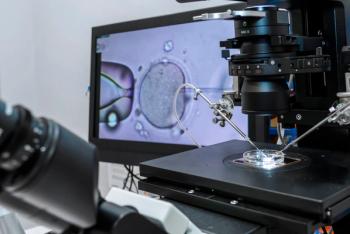
Female sexual dysfunction education found lacking
In a recent study, significantly more urology websites contained information about male sexual dysfunction when compared to the availability of female sexual dysfunction information on ob-gyn websites.
Urology residency program websites and urology training do not provide enough information about female sexual dysfunction (FSD), according to a recent study presented at the 25th Annual Fall Scientific Meeting of SMSNA.1
Male sexual dysfunction (MSD) often receives significantly more attention than FSD, but the American Urological Association (AUA) Core Curriculum provides information about both conditions. This highlights the need for urology residencies to teach students about both FSD and MSD.1
Discussions about sexual dysfunction between patients and providers also remain lacking.2 Approximately 43% of women aged 18 to 49 years experience FSD, but a survey of women aged 21 to 45 years residing in the United States and Canada reported a high rate of not discussing sex life with their provider.
Participants listed the provider not raising the topic, no sexual health issues being present, not feeling it was relevant to pregnancy, and feeling uncomfortable with the topic as reason for not discussing sexual health topics with their provider. This indicated a need for improved communication between patients with FSD and providers.2
As ob-gyns may also treat FSD, urology and ob-gyn education about this topic should be compared.1 Investigators conducted a study to investigate FSD information available on AUA- and American College of Obstetricians and Gynecologists (ACOG)-accredited residency program websites vs MSD information available in urology programs.
There were 148 urology program websites and 228 ob-gyn program websites identified through AUA and ACOG residency program lists. Three independent reviewers analyzed the websites for FSD and MSD information.1
FSD subcategories included sexual health function and dysfunction related to women, while MSD subcategories included erectile dysfunction, impotence, men’s health, sexual health and function, and prosthetics. Relevant data included FSD and MSD content, number of clicks to reach each topic, curricula, subspecialties, and program directors.1
Data stratification was performed by AUA section and ACOG district. FSD and MSD content was compared using chi-square analysis.1
FSD content was only identified in 1.4% of urology residency program websites, with content accessed through a median of 1 click and a range of 0 to 2 clicks. In comparison, 5.3% of ob-gyn websites included FSD content, with a median of 1 click and range of 0 to 3 clicks to access content.1
For MSD, content was identified on 50%of urology websites, and the median number of clicks was 1. This indicated a 37% increase in available content when compared to FSD content on ob-gyn websites. Notably, FSD content was found in 83% of listed curricula vs MSD in only 45% of listed curricula.1
MSD content was not predicted by andrology or sexual medicine subspecialists on faculty or program directors specializing in andrology or sexual medicine. However, FSD content was predicted by an ob-gyn FSD faculty member. Additionally, concordant program director gender did not predict MSD content, but did predict ob-gyn FSD content.1
Investigators noted that this data was a website review and may not reflect practices from individual programs. Additional data should be obtained by polling residents about the availability of FSD and MSD content in their programs.1
These results indicated a lack of FSD content in urology residency program websites and urology training when compared to MSD content and training. Investigators concluded, “both specialties must make great strides to fill the gap and care for women’s sexual health concerns.”1
Reference
- Brink SM, Implicito C, Cadiente A, Ullah N, Nguyegn H, Shin D. The paucity of female sexual dysfunction training in urology and OBGYN residencies. Presented at: 25th Annual Fall Scientific Meeting of SMSNA. Scottsdale, Arizona. October 17-20, 2024.
- Krewson C. Patients not discussing sexual dysfunction with physicians despite high prevalence. July 18, 2023. Accessed October 16, 2024.
https://www.contemporaryobgyn.net/view/patients-not-discussing-sexual-dysfunction-with-physicians-despite-high-prevalence
Newsletter
Get the latest clinical updates, case studies, and expert commentary in obstetric and gynecologic care. Sign up now to stay informed.
















